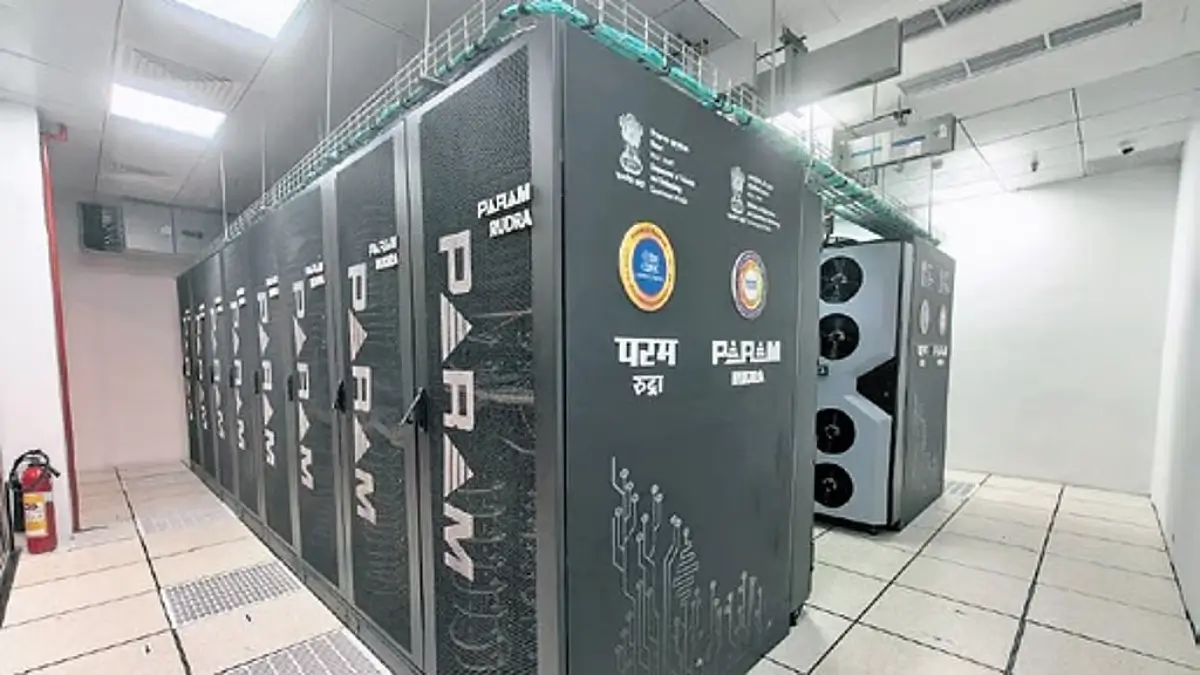NITI Aayog Launches Sampoornata Abhiyan: A Drive Towards Holistic Development
Introduction
The NITI Aayog has launched the Sampoornata Abhiyan, an ambitious initiative aimed at fostering holistic development across India. This campaign, rooted in sustainable and inclusive growth, is a significant step towards addressing the multifaceted challenges faced by the nation. The Sampoornata Abhiyan is expected to play a pivotal role in the socio-economic development of various sectors, ensuring a balanced and equitable progress.
Objectives of Sampoornata Abhiyan
The primary objective of the Sampoornata Abhiyan is to create a comprehensive framework for the development of all regions and communities in India. This includes focusing on key areas such as healthcare, education, infrastructure, and sustainable livelihoods. By integrating these elements, the initiative aims to enhance the overall quality of life for citizens.
Key Components
The Sampoornata Abhiyan is built on several core components that address different aspects of development. These include:
- Healthcare: Improving access to quality healthcare services, especially in rural and remote areas.
- Education: Ensuring inclusive and equitable quality education for all, promoting lifelong learning opportunities.
- Infrastructure: Developing robust infrastructure to support economic activities and improve connectivity.
- Sustainable Livelihoods: Promoting sustainable agricultural practices and vocational training to enhance employment opportunities.
Implementation Strategy
NITI Aayog has outlined a comprehensive implementation strategy for the Sampoornata Abhiyan. This involves collaboration with state governments, local bodies, and various stakeholders to ensure effective execution. Monitoring and evaluation mechanisms have been put in place to track progress and make necessary adjustments.
Expected Outcomes
The expected outcomes of the Sampoornata Abhiyan include improved healthcare services, higher literacy rates, better infrastructure, and increased employment opportunities. By addressing the root causes of socio-economic disparities, the initiative aims to create a more inclusive and sustainable development model.

Why This News is Important
Enhancing Socio-Economic Development
The launch of the Sampoornata Abhiyan is a major step towards enhancing socio-economic development in India. By addressing key areas such as healthcare, education, and infrastructure, the initiative aims to improve the overall quality of life for citizens.
Addressing Regional Disparities
One of the critical aspects of the Sampoornata Abhiyan is its focus on reducing regional disparities. By promoting balanced development across different regions, the initiative seeks to ensure that no community is left behind in the nation’s growth trajectory.
Boosting Sustainable Development
Sampoornata Abhiyan’s emphasis on sustainable livelihoods and environmental conservation is crucial for long-term development. By encouraging sustainable practices, the initiative aligns with global efforts to combat climate change and promote environmental sustainability.
Collaboration and Stakeholder Engagement
The collaborative approach of the Sampoornata Abhiyan, involving various stakeholders including state governments and local bodies, is essential for its successful implementation. This inclusive strategy ensures that the needs and aspirations of all sections of society are taken into account.
Historical Context
Background of NITI Aayog
NITI Aayog, the National Institution for Transforming India, was established in 2015, replacing the Planning Commission. Its primary objective is to foster cooperative federalism by involving state governments in the economic policy-making process. Over the years, NITI Aayog has launched various initiatives aimed at promoting sustainable and inclusive development across the country.
Previous Initiatives
Prior to the Sampoornata Abhiyan, NITI Aayog has been instrumental in launching several developmental programs such as the Aspirational Districts Programme, which aims to quickly and effectively transform underdeveloped districts. The Sampoornata Abhiyan builds on these previous efforts, incorporating lessons learned and expanding the scope of development initiatives.
Key Takeaways from Sampoornata Abhiyan: A Drive Towards Holistic Development
| Serial Number | Key Takeaway |
|---|---|
| 1 | Sampoornata Abhiyan aims at holistic development, focusing on healthcare, education, infrastructure, and sustainable livelihoods. |
| 2 | The initiative addresses regional disparities, promoting balanced and inclusive growth across different regions. |
| 3 | A collaborative approach involving state governments and local bodies is crucial for the implementation of Sampoornata Abhiyan. |
| 4 | The expected outcomes include improved healthcare services, higher literacy rates, better infrastructure, and increased employment opportunities. |
| 5 | NITI Aayog’s previous initiatives, such as the Aspirational Districts Programme, provide a foundation for the Sampoornata Abhiyan. |
Important FAQs for Students from this News
1. What is the Sampoornata Abhiyan?
The Sampoornata Abhiyan is an initiative launched by NITI Aayog aimed at promoting holistic development in India. It focuses on key areas such as healthcare, education, infrastructure, and sustainable livelihoods.
2. Who launched the Sampoornata Abhiyan?
The Sampoornata Abhiyan was launched by NITI Aayog, the National Institution for Transforming India.
3. What are the primary objectives of the Sampoornata Abhiyan?
The primary objectives include improving healthcare access, ensuring quality education, developing infrastructure, and promoting sustainable livelihoods.
4. How does Sampoornata Abhiyan aim to reduce regional disparities?
The initiative promotes balanced development across different regions by addressing the specific needs of each area, ensuring no community is left behind.
5. What is the role of stakeholders in the Sampoornata Abhiyan?
Stakeholders, including state governments and local bodies, collaborate to implement the initiative effectively, ensuring the needs of all sections of society are met.
Some Important Current Affairs Links

















